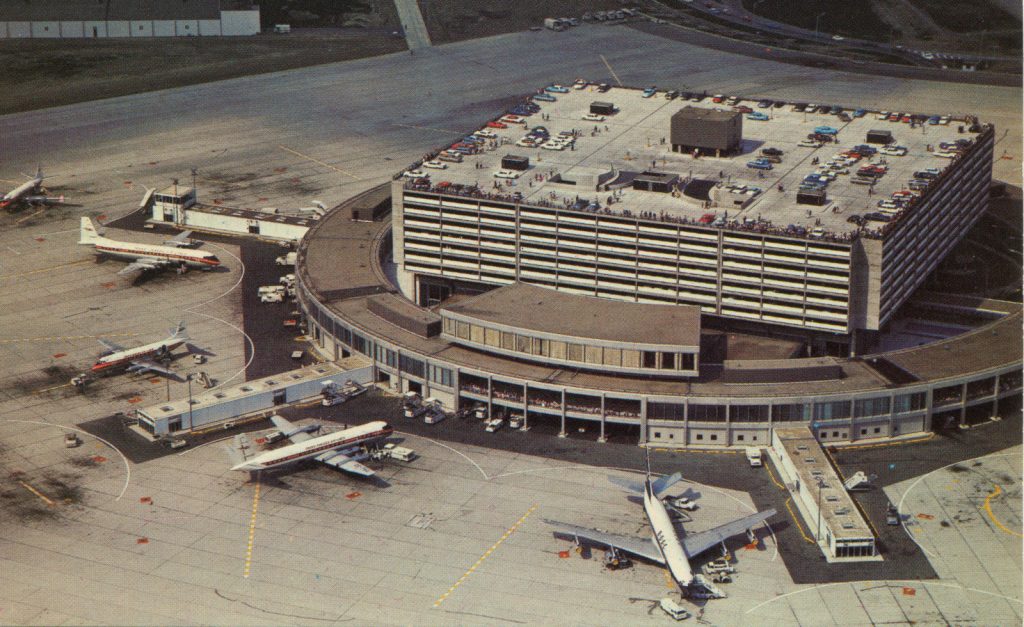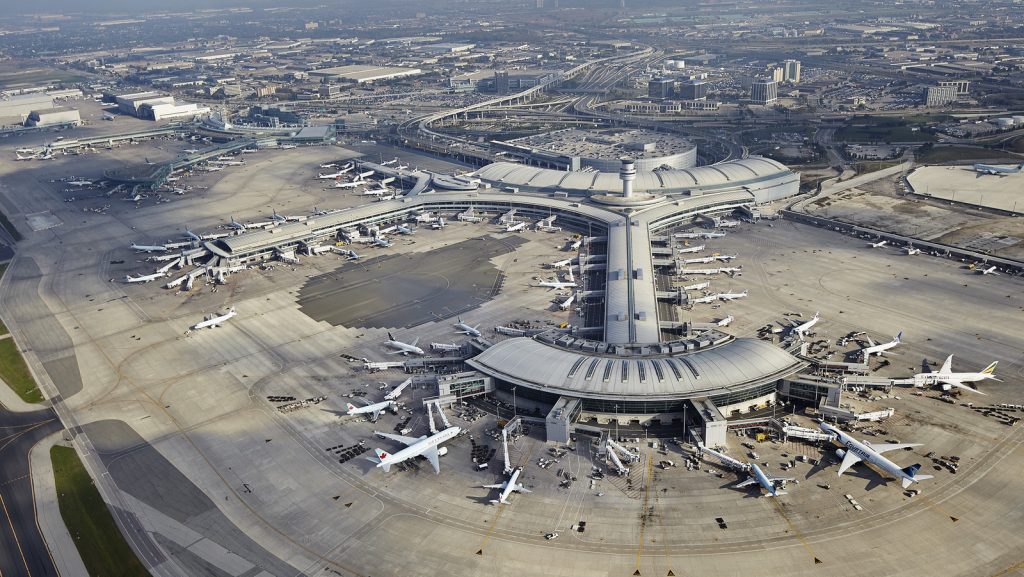
Toronto-Pearson International Airport (YYZ) Terminals 1 & 3 – 2013 Photo: Greater Toronto Airport Authority (GTAA)
Written for Airwaysmag.com/Airchive.com
By most any measure, Toronto Pearson International Airport (YYZ) is big. Canada’s busiest airport has five runways, two terminals with over 110 gates, serves 35 million passengers annually, and has a huge cargo center and the world’s biggest aircraft de-icing facility. 60 airlines serve YYZ with flights to over 150 destinations, it’s the 34th largest airport in the world, and is ranked 2nd largest in international passenger traffic in North America. The airport is home to Air Canada’s largest hub, and as a founding member of Star Alliance, it’s the major Canadian hub for that airline group.
Back in the 1930s, Toronto transportation officials decided that the city would be best served by two airports. One was built close to downtown on the Toronto Islands. That airport has survived many challenges over the years and is now Billy Bishop Toronto Island Airport (YTZ), home of Porter Airlines. After much deliberation, large plots of farmland were purchased for the second airport near the town of Malton, a then-huge distance of 20 miles northwest of downtown Toronto.
Perhaps the officials were visionary, and realized that the space-constrained Island Airport wouldn’t be able to expand to handle Toronto’s future air travel needs. Or maybe buying land in Malton was a good deal. Whatever the reason, the decision gave planners lots of room for expansion. For a while.
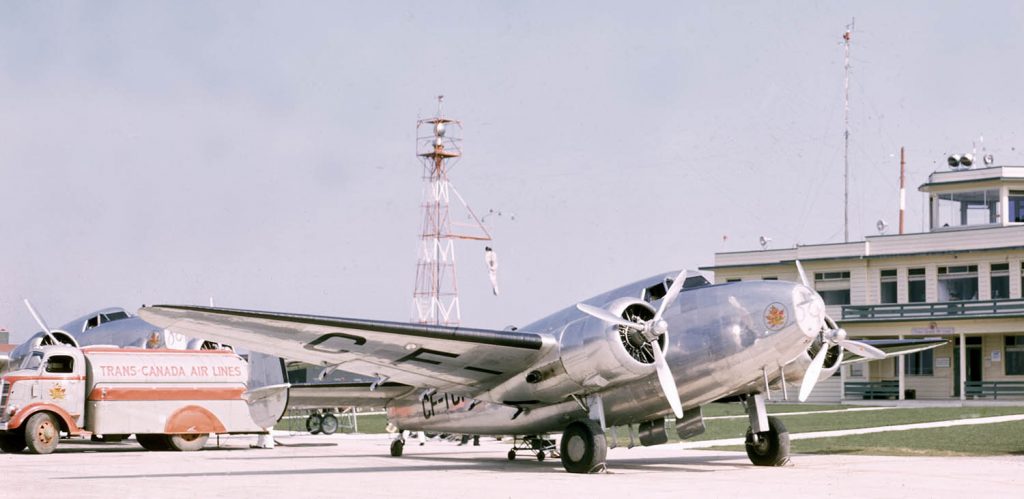
Trans-Canada Airlines (TCA) Lockheed 14 Super Electras at the Malton Airport Terminal, 1939 Photo: Air Canada
The first scheduled passenger fight operated from YYZ in August, 1939. The very first terminal was an old farm house, which was soon replaced with Malton Airport’s first purpose-built terminal. Now long-gone, it was a twin of the first terminal built at Toronto Island Airport. That building, designated a National Historic Building, now sits in the infield at YTZ while historians and airport officials decide where it should be displayed. At Malton, the original terminals were located close to what is now the threshold of Runway 23.
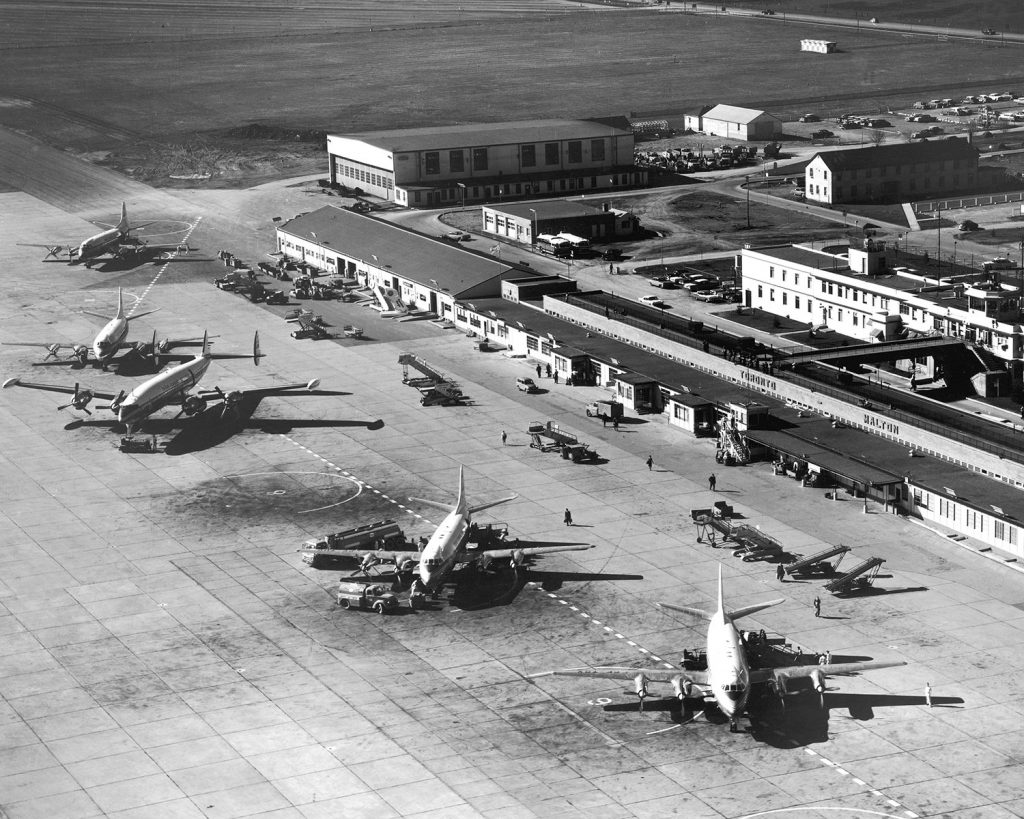
1950s – Four TCA Vickers Viscounts and a TCA Lockheed Super Constellation – with spectators on the terminal roof.
Photo: Air Canada
The late 1940s and 1950s saw major growth in air travel worldwide, and Malton Airport continued to grow to meet Toronto’s needs. Runways were lengthened and added to the airport, along with a new terminal building. One can only imagine this “golden age”, when dressed in their finest, passengers would walk across the ramp and up the stairs to their Trans-Canada Airlines (TCA) Lockheed L-1049G Super Constellation, while waving to their friends.
The terminal had a large rooftop observation area, which was closer to the apron than the airport’s control tower. Starting in the late 1950s, Malton saw its first jet service with TCA and Canadian Pacific Airlines DC-8s. I remember that terminal, even though I was only 5 years old in 1961 when I arrived on my first-ever flight, on a TCA DC-8-43 from Montreal.
With the arrival of the jet age, Malton again had to expand. In 1964, YYZ’s new terminal opened about a mile south of the previous terminal, close to the then-new parallel Runway 06L/24R. The new terminal was a unique design called the “Aeroquay” – state-of-the-art for the 1960s. It had a central ticketing and operations area topped by a 9-level parking garage. The central building was ringed by a circular concourse, leading to six “fingers” with a total of 23 gates to handle up to 3.5 million passengers, annually.
The 1960s expansion plan for YYZ had additional Aeroquays, but the design quickly became overwhelmed by passenger loads and changing security and operational requirements. I was a “ramp rat” at the Aeroquay in the early ‘70s as the wide-bodies came into service, and it was clear that the terminal was already outdated.
In 1972, the long-and-thin Terminal 2 opened a short distance across the ramp from T1. Originally a cargo building, T2 became Air Canada’s main terminal at YYZ for the next three decades. With expansion and improvements over the years, T2’s capacity increased from 6 to 9 million passengers per year. Although it could be quite a trek to some of the gates, T2 was pretty efficient if things lined up. You could get from car to gate in about 5 minutes – if you parked in the right section of the garage, and if you entered the right terminal door, if you went through the right security checkpoint, and if your gate was close by, like Air Canada’s Rapidair shuttle. That was my drill when I regularly flew AC between YYZ and Montreal (YUL) in the late ‘80s.
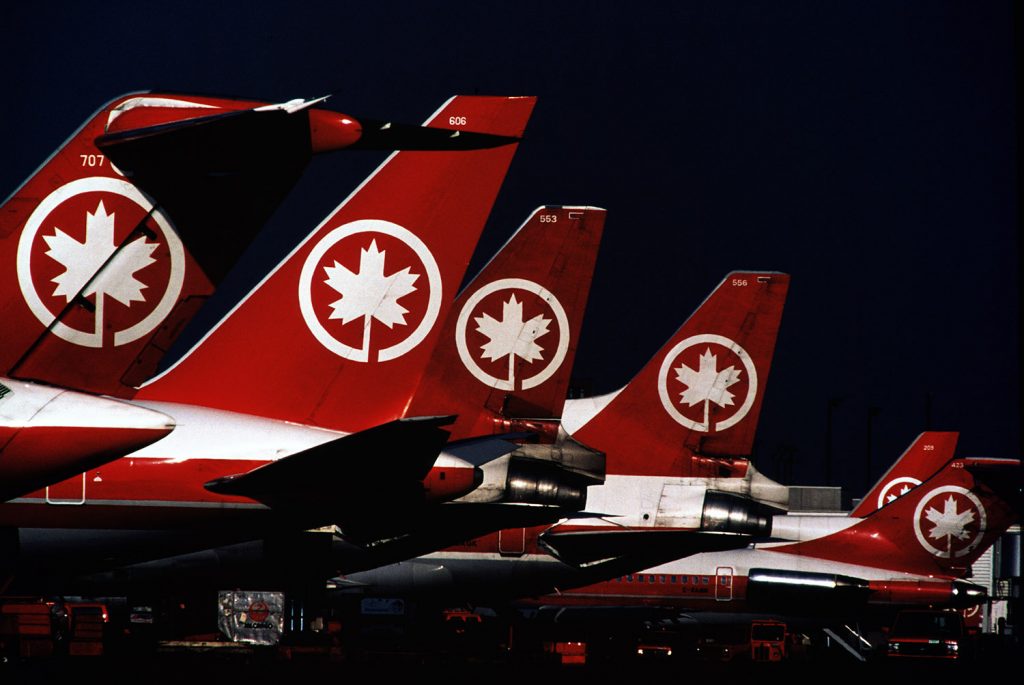
Early 1990s lineup of Air Canada planes at Terminal 2, including a DC-9, 767-200, L-1011s, a 727-200 and a then new A320.
Photo: Air Canada
In 1984, Toronto International Airport was renamed Lester B. Pearson International Airport, in recognition of Canada’s 14th Prime Minister. The airport was bursting at the seams. The T1-Aeroquay was improved to handle 6.5 passengers per year, almost double its original design capacity, but that wasn’t enough. So in 1987, construction began on Terminal 3, the first passenger terminal in Canada to be developed, owned and operated by the private sector.
Originally named the “Trillium Terminal” (after the official flower of the Province of Ontario), T3 opened in 1991 with 24 gates and a capacity of 10 million passengers per year. The terminal also included a 480-room hotel, originally a Swissôtel, and has operated as a Sheraton Gateway since 1993. T3 originally served Canadian Airlines and international carriers that moved from the Aeroquay. After the purchase of Canadian Airlines by Air Canada in 2001, T3 eventually became the Eastern Canada hub for Westjet Airlines, and the YYZ home for Oneworld and SkyTeam international airlines.
The Greater Toronto Airports Authority (GTAA) took over management of YYZ in the mid-1990s from government agency Transport Canada, and continued to develop the airport’s Master Plan. The GTAA proposed to replace both the Aeroquay and Terminal 2 with a single unified terminal, which along with Terminal 3 would accommodate up to 50 million passengers per year. Along with a huge number of airside improvements, this new terminal was planned to take YYZ through to 2030.
We’ll look at this next phase of YYZ’s development in Part 2 of our story.
